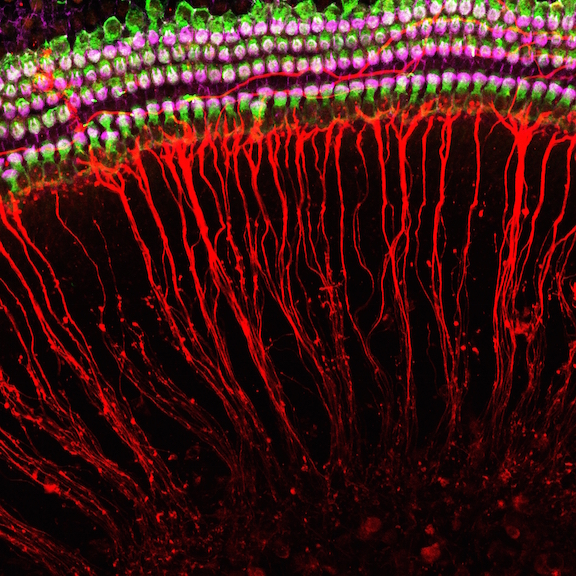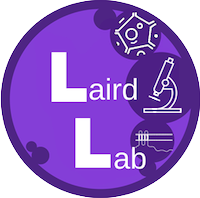Research
Contact Info
Dr. Dale W. Laird
Anatomy and Cell Biology
Western University
Dental Sci Bldg, Rm 00077
London, ON, Canada N6A 5C1
t. 519.661.2111, ext. 86827
dale.laird@schulich.uwo.ca
Connexins in Hearing and Hearing Loss
Hearing deficits can cause sensory impairment and a decrease in the quality of life. Although the mechanisms involved have yet to be fully elucidated, evidence suggests that a subset of connexins play a critical role in hearing. Remarkably, 1:2000 children will be born with congenital deafness, 50% of which will be due to GJB2 (Cx26) or GJB6 (Cx30) gene mutations. Consequently, it is now standard operating procedure in developed countries to genetically screen these children for GJB2 or GJB6 gene mutations. Furthermore, the role of auditory track connexins in noise-induced and age-related hearing loss remain poorly understood.Together with Dr. Brian Allman at the University of Western Ontario, we have recently investigated the scope of auditory track connexins involved in hearing and the underlying mechanisms.

Selected Publications
R. Beach, J.M. Abitbol, B.L. Allman, J.L. Esseltine, Q. Shao and D.W. Laird (2020) “GJB2 mutations linked to hearing loss exhibit differential trafficking and functional defects as revealed in cochlear-relevant cells” Frontiers in Cell and Developmental Biology 8: 215.
J.M. Abitbol, R. Beach, K. Barr, J.L. Esseltine, B.L. Allman and D.W. Laird (2020) “Cisplatin-induced ototoxicity in organotypic cochlear cultures occurs independent of gap junctional intercellular communication” Cell Death and Disease 11: doi: 10.1038.
J.J. Kelly, J.M. Abitbol, S. Hulme, E.R. Press, K.J. Barr, D.W. Laird* and B.L. Allman* (2019) "A connexin30 A88V gene mutant reduces cochlear gap junction expression and confers long-term protection against hearing loss" Journal of Cell Science 132: doi:10.1242/jcs.224097. *co-senior authors
J.M. Abitbol, J.J. Kelly, K.J. Barr, B.L. Allman and D.W. Laird (2018) "Mice harbouring an oculodigitodental dysplasia-linked Cx43 G60S mutation have severe hearing loss" Journal of Cell Science 131: 1-14 (selected for the cover).
J.M. Abitbol, J.J. Kelly, K. Barr, A.L. Schormans, D.W. Laird and B.L Allman (2016) "Differential effects of pannexins on noise-induced hearing loss" Biochemical Journal 473: 4665-4680.
A.C. Berger, J.J. Kelly, P. Lajoie, Q. Shao and D.W. Laird (2014) “Mutations in Cx30 that are linked to skin disease and non-syndromic hearing loss exhibit several distinct cellular pathologies” Journal of Cell Science 127: 1751-1764. Recommended by Faculty of 1000, F1000Prime.
S. Penuela, L. Harland, J. Simek and D.W. Laird (2014) “Pannexin channels and their links to human disease” Biochemical Journal 461: 371-381.









